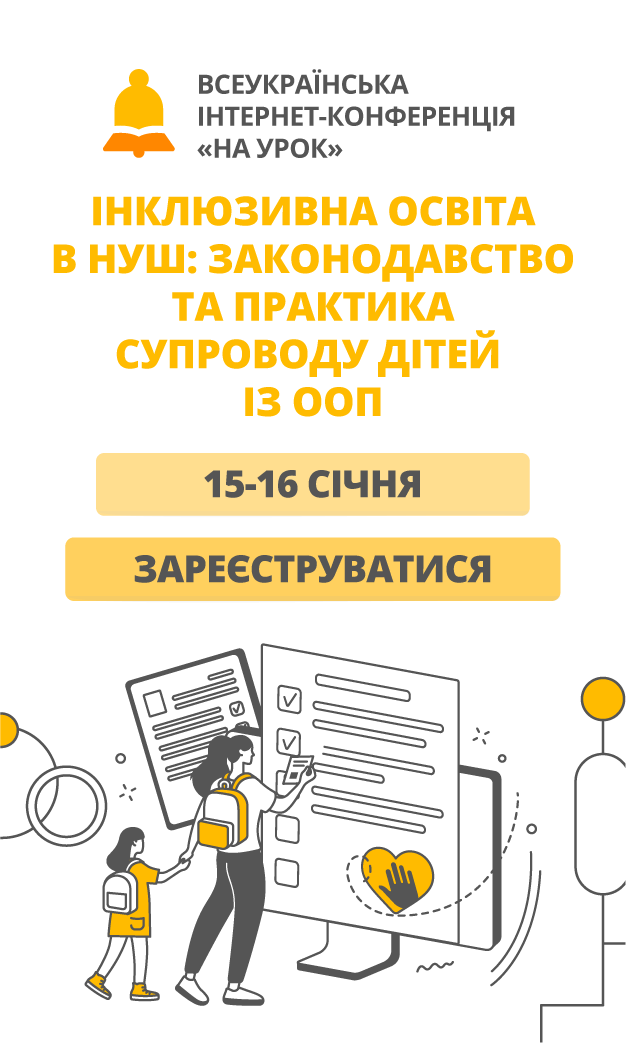Заняття з англійської мови на тему: Childhood Diseases.
Навчально – методична карта заняття
з теми: Childhood Diseases.
з дисципліни «Англійська мова (за професійним спрямуванням)» для студентів відділення «Сестринська справа» та «Лікувальна справа»
Мета заняття: Дати студентам поняття про дитячі хвороби, їх основні та найбільш розповсюджені види, про симптоми та лікування хвороб. Ознайомити з новим лексичним матеріалом, виконувати вправи з новим лексичним матеріалом.
Тип заняття: комбіноване заняття
Міжпредметні зв’язки: педіатрія, інсектологія.
Структура заняття та розрахунок часу:
І. Організаційна частина
1. Повідомлення теми та мети заняття (2хв.)
2. Уведення в іншомовну атмосферу (15 хв.)
ІІ. Основна частина заняття (55хв)
ІІІ. Заключна частина заняття (8хв.)
Забезпечення заняття: роздатковий матеріал: тексти з вправами, нові ЛО, практичні вправи, тест.
Література:
Sabluk A.H, Levandovska L. V. English for medical students.
Попередня підготовка заняття:
Організація заняття, перевірка присутніх по журналу.
Методи контролю знань:
Індивідуальна перевірка знань, репродуктивна бесіда, розповідь, демонстрація наочних засобів навчання, створення проблемних ситуацій, метод вправ.
Вивчення та закріплення нового матеріалу.
І. Підготовка до сприймання іншомовного мовлення
AIM
Good morning, I am very glad to see you. Today we are going to speak about one of important and necessary topic. It is very important especially in our time.
Warming up
Phonetic Reading. Read the words and word combinations, translate them.
Diphtheria, to treat for diphtheria, to make a diagnosis of diphtheria.
Whooping cough, in case of whooping cough, to fall ill with whooping cough (pertussis).
Meningitis, cerebrospinal meningitis, epidemic cerebrospinal meningitis, to treat for meningitis.
Eruption, characteristic of eruption, eruption appears(disappears), the type of eruption.
Childhood disease and disorder, any illness, impairment, or abnormal condition that affects primarily infants and children—i.e., those in the age span that begins with the fetus and extends through adolescence.
Health and disease during the period from conception to adolescence must be understood against this backdrop of changes. Although, for the most part, the diseases of childhood are similar to those of the adult, there are several important differences. For example, certain specific disorders, such as precocious puberty, are unique to children; others, such as acute nephritis—inflammation of the kidney—are common in children and infrequent in adults.
Topical Vocabulary.
smallpox , variola – віспа
сhickenpox , varicella – вітряна віспа
measles – кір
German measles , rubella - краснуха, черепна висипка, червінка
mumps , epidemic parotitis – свинка
polio (poliomyelitis) – поліомієліт
scarlet fever – скарлатина
whooping cough, pertussis – кашлюк
Pre – reading activity.
Exercise 1. Fill in the blanks with the nesessary words given below
A skin rash, mouth, nose, infectious diseases, be isolated , flushed
- The disease passes through …and …
- The face is…
- The child with whooping cough must….
- The first symptom in many ... is… .
Exercise 2. Translate into English.
- ознаки сильної застуди
- висипи на шкірі –
- інфекційне захворювання –
- перші симптоми –
- бути уважним –
- запобігти розповсюдженню хвороби , бути ізольованим
- гігієна рота –
Exercise 3. Read the text and retell it.
Most children with infectious diseases have the same symptoms. The beginning of them is rather common: sore throat, fever, running nose, headache, cough and flushed face. To children infectious diseases belong : chicken cough, measles, mumps, whooping cough, scarlet fever and poliomyelitis. In children such diseases are taking an easier course than in adults.
Very often children fall ill with measles today. Measles is a very infectious disease. The disease passes from one child to another. The first symptoms are: sneezing, coughing. The disease begins with signs of heavy cold, a running nose and dry cough. The temperature is high and the child dislikes the light. The rash appears on the third or fourth day behind the ears and around the mouth and then covers the whole body.
The nurse must be very careful to prevent the spread of infection. She must take care of the hygiene of the child`s mouth: his mouth and lips must be clean and moist.
The most common infectious disease is influenza (flu, grippe).
An unvaccinated child is exposed to any infectious disease, so children must be vaccinated according to the recommended immunization schedule.
After-reading activity
Translate the following sentences into English .
1.Першими симптомами скарлатини є біль у горлі, температура, головний біль і загальна слабкість (нездужання).
2. Привиті діти зазвичай не хворіють цими хворобами.
3. Кашлюк - це одна із хвороб, до якої немає спеціальних ліків.
4.При скарлатині період злущення, який є найбільш інфекційним, починається на 21 – 23 день.
Get some more information.
I need 4 students for this task for reading and translating the texts.
Student 1.
Measles, also known as rubella, is a very contagious respiratory infection that causes cold symptoms, fever and a characteristic rash. It is caused by the measles virus, which usually spreads from person to person through coughs and sneezes, and through contact with used tissues, shared drinking glasses, dirty hands that touched a runny nose, or other contaminated surfaces. Once the virus enters the body, the infection spreads throughout the respiratory tract to the skin and to other body organs. A person with measles is contagious (can infect others) from one to two days before any symptoms begin (or three to five days before the rash), to four days after the rash appears. Some doctors prescribe high doses of vitamin A to patients hospitalized with measles and its complications, especially children from 6 months to 2 years.
Student 2.
Scarlet fever was once a very serious childhood disease, but now is easily treatable. The incubation period is short, generally 1—2 days. Illness typically begins with a fever and sore throat. It may be accompanied by chills, vomiting, abdominal pain and malaise. The streptococcal bacteria produce a toxin that causes a rash that appears in one or two days after the onset of illness. The rash usually first appears on the neck and chest and then spreads over the body. It is described as “sandpapery” in quality. The texture of the rash is more important than the appearance in confirming the diagnosis. The rash can last for over a week. As the rash fades, peeling may occur around the finger tips, toes, and groin area. Bacteria are spread by direct contact with infected person or by droplets exhaled by an infected person. Avoid contact with infected person.
Student 3.
Chickenpox is an infection that causes an itchy, blistering rash and is very contagious. A person with chickenpox can spread the disease to someone else from one day before the rash appears until all chickenpox blisters have crusted over. Once someone has had a chickenpox infection, he or she almost always develops a lifelong immunity, meaning that person usually does not get chickenpox a second time. The exception is a child who is infected at a very young age. Chickenpox, in most cases, goes away by itself. Dangerous skin infections also can occur. Some people are at high risk of serious complications from chickenpox, including people who have problems with their immune system, certain pregnant women and premature infants.
Student 4.
Whooping cough ( Pertussis) is a highly contagious bacterial disease that affects the respiratory system. It produces spasms of coughing that may end in a high-pitched, deep inspiration (the “whoop”). The infection is spread through the air by droplets from the breath of an infected person. Vaccine helps to protect children against this disease. Vaccination starts in infancy. The bacteria invade the nose and throat, the breathing tube (trachea) and the lungs. It starts with symptoms similar to the common cold, and progresses to spasms of coughing after 10 to 12 days. The child may momentarily lose consciousness at the end of a coughing spell. During this stage, there is heavy mucus production. Coughing spells may lead to vomiting. Recovery begins about four weeks after symptoms begin and may take several weeks.
- What infectious diseases do you know?
- What helps to prevent complications?
- What is the first symptom of many infectious diseases?
- How can the disease pass from one person to another?
- Vaccine helps to protect children against infectious diseases, doesn’t it?
Summarizing .
What topic have we spoken about today?
Call please the main childhood diseases/
A self – revision test in 10 questions..
Question 1.
- What is the beginning of children infectious diseases?
a ) Sore throat, fever, running nose, headache, cough, flushed face
b) Stomach ache, earache, blindness, deafness
Question 2
The child with whooping cough must be .... .
- Closed b ) Isolated c ) at the open air d) at school
Question 3
"Chickenpox " - це ... .
a ) Кір b) Кашлюк c) Вітрянка d)Паротит
Question 4.
The first symptom in many infectious diseases is ... .
a ) Headache b) Skin rash c) Toothache d ) Diarrhea
Question 5.
Children infectious diseases are: ..........
- Chickenpox, gastritis, ulcers, pneumonia
- Whooping cough, gastritis, ulcers, pneumonia, rhinitis
c ) Chickenpox, measles, mumps,polio, whooping cough, scarlet fever.
Question 6
Very often children fall ill with .... today.
- Measles b)Whooping cough c) Polio d) Meningitis
Question 7
The child doesn't like the light when he or she is I'll with ... .
- Scarlet fever b) Measles c) Chickenpox 4 ) Pneumonia
Question 8
When and where the rash appears when the child is ill with measles?
a) Behind the ears and around the mouth, on the third or fourth day
- Behind the ears and around the head, on the first or third day
- Behind the ears and around the mouth, on the fourteenth day
Question 9
The nurse must be very careful.... .
- to avoid pneumonia b) to prevent the spread of infection
- to make the child comfortable
Question 10
The disease passes through ..... .
- Mouth and nose b) Ears and eyes c) Hands and legs
Home task
Learn the lexical material . ex1, p 181, ex 2, p 183 by A.H. Sabluk


про публікацію авторської розробки
Додати розробку
